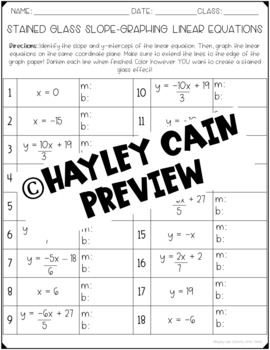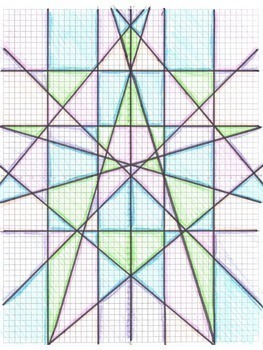Stained Glass Slope Graphing Linear Equations Slope Intercept Form
- PDF
What educators are saying
Description
Students will graph 18 equations written in slope-intercept form. All four types of slope are included(positive, negative, undefined, and zero). They will then darken the lines and color however they like creating a picture with a stained glass effect. This is a great activity that goes beyond the worksheet! You can save paper by printing the instructions on one side and the graph paper on the other!
This resource includes:
- Student instructions page
- Graph paper with the numbers and x- and y-axis labeled
- Graph paper without the numbers or x- and y-axis labeled
- An outline of the graphed lines
- A colored example of the end result
- A blank copy for your higher-level learners to create their own equations and designs
Options for using this resource:
This makes a great classroom or bulletin board display! Students get practice after learning about graphing linear equations and can be creative with their end results. This can be left as substitute plans as well.
My higher-level learners love creating their own designs by writing their own linear equations(blank version is included)! This is great for differentiation! It's amazing the designs students can come up with!
You might also be interested in these other resources:
"I Have, Who has..?" Finding Slope from a Graph Game
Slope between Two Points Matching Puzzle
Slope Review Color By Number Practice
Writing Linear Equations Task Cards digital GOOGLE Slide Version
Finding Slope Given Two Points Puzzle
Common Core Aligned
8.EEB6, 8.FA3, 8.FB4
Don't forget that leaving feedback earns you points toward FREE TPT purchases!
© Hayley Cain (Activity After Math) Please note - this resource is for use by one teacher only. Additional teachers must purchase their own license. If you are interested in purchasing several licenses, please contact me. Thank you for your feedback and Happy Teaching!
activityaftermath@gmail.com
★Let's be Social





